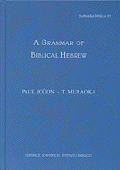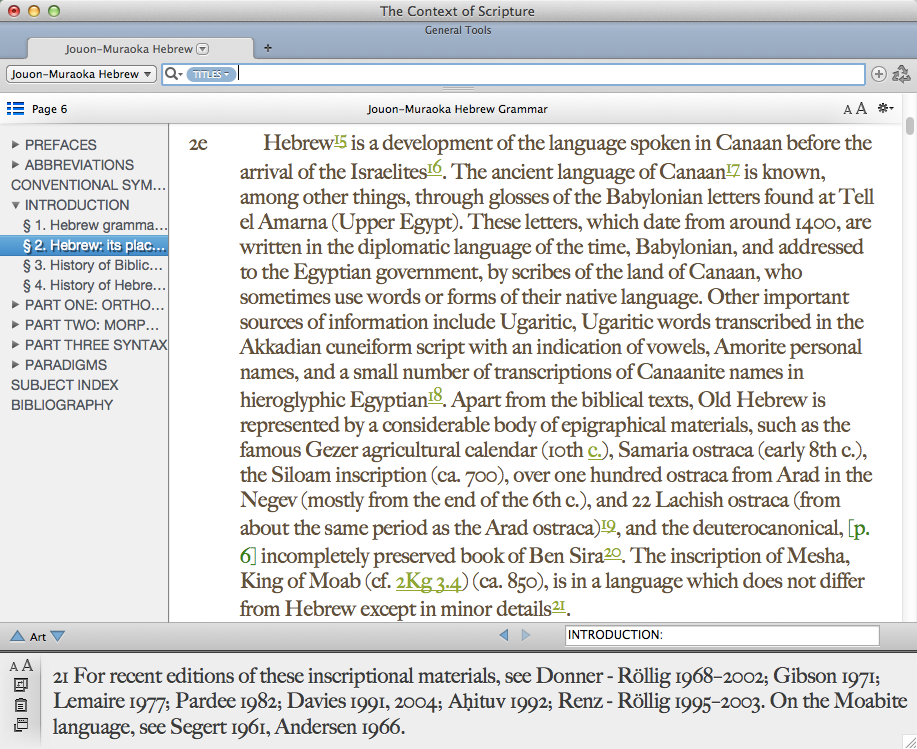A Grammar of Biblical Hebrew

For intermediate and advanced students of the Hebrew Bible, the chief reference grammars in English for the Hebrew language are Gesenius’ Hebrew Grammar (abbrev. GKC; Oxford, 1909), Bruce K. Waltke and Michael P. O’Connor’s Introduction to Biblical Hebrew Syntax (Eisenbrauns, 1990), and the newest edition of Paul Joüon and Takamitsu Muraoka’s A Grammar of Biblical Hebrew (Pontifical Biblical Institute, 2006).
Apart from its value as a reference for looking up explanations for difficult Hebrew forms one encounters in the text, the value of having Joüon–Muraoka in one’s library is evident from the number of times it is cited as an authority in commentaries (e.g., 500x in WBCOT), dictionaries (approximately 60x each in both HALOT and Jenni–Westermann), and other reference works (90x in Waltke–O’Connor). You can now look up those references conveniently within Accordance!
Besides reflecting the most up-to-date scholarship, Joüon–Muraoka is also distinctive for its inclusion of scholarship on Biblical Hebrew published in Modern Hebrew:
(click for full size image)
Like many Accordance tools, Joüon–Muraoka can be searched by numerous fields (including the page number), greatly simplifying the focus of one’s queries. Rounding out the grammatical presentation are paradigms, a subject index, and bibliography.
From the Preface to the Revised English Edition (2005):
“Whilst Joüon intended his grammar to be an intermediate grammar, the 1991 edition had already begun to take on the appearance of an advanced grammar; this is even more evident in this revised edition, which has a considerable amount of bibliographical information and a scholarly exchange in copious footnotes. Given the absence of a revised Gesenius-Kautzsch, this might be justified. This has led to, among other things, our decision to present all this data in real footnotes. Moreover, to minimise the space allotted to footnotes, the mode of citation of secondary literature is, with a small number of exceptions, that of the social sciences, which has entailed appending a complete bibliography incorporating all the works mentioned in the body of the grammar plus a small number not actually cited. We have also added an index of modern authorities. It is hoped that, with the use of a more elegant Hebrew font, these features just mentioned make the grammar a little more pleasing in appearance than the earlier edition.”
How to order Joüon-Muraoka Hebrew
This module is available for Easy Install and can be purchased here.
Article Author: J. P. Kang


